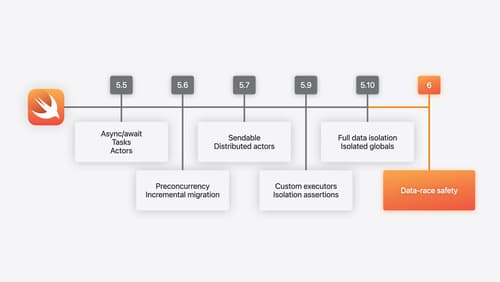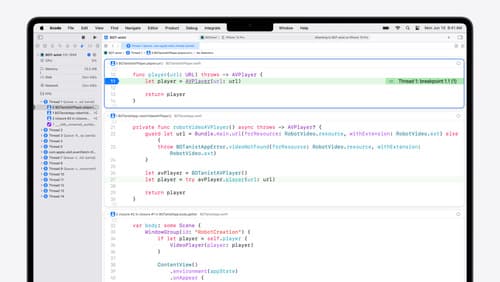Tell me about strict concurrency changes.
Asked on 2024-08-03
1 search
Strict concurrency changes in Swift 6 focus on enhancing data-race safety and making concurrency issues more manageable during development. Here are the key points:
-
Data-Race Safety by Default: Swift 6 achieves data-race safety by default, turning potential data race issues into compile-time errors. This significantly improves the security and reliability of your app by catching concurrency issues early in the development process (What’s new in Swift).
-
Incremental Adoption: You can adopt Swift 6's strict concurrency features incrementally. This allows you to enable concurrency checking on a per-module basis, making it easier to transition existing codebases without having to refactor everything at once (Migrate your app to Swift 6).
-
Concurrency Checking: Enabling strict concurrency checking in your project's build settings will cause the compiler to emit warnings for code that it cannot confirm as concurrency-safe. This helps identify and address potential data races early (Migrate your app to Swift 6).
-
Handling Legacy Code and Dependencies: When working with modules or libraries that haven't been updated for Swift concurrency, you can still enable strict concurrency checking in your own code. This helps ensure that your code is safe, even if some dependencies are not yet concurrency-aware (Migrate your app to Swift 6).
-
Low-Level Synchronization Primitives: Swift 6 introduces new low-level synchronization primitives like atomics and mutexes. These tools provide efficient, lock-free implementations for safe concurrent access to shared data (What’s new in Swift).
For a detailed walkthrough on enabling Swift 6 language mode and adopting these concurrency features, you can refer to the session Migrate your app to Swift 6.

What’s new in Swift
Join us for an update on Swift. We’ll briefly go through a history of Swift over the past decade, and show you how the community has grown through workgroups, expanded the package ecosystem, and increased platform support. We’ll introduce you to a new language mode that achieves data-race safety by default, and a language subset that lets you run Swift on highly constrained systems. We’ll also explore some language updates including noncopyable types, typed throws, and improved C++ interoperability.

Migrate your app to Swift 6
Experience Swift 6 migration in action as we update an existing sample app. Learn how to migrate incrementally, module by module, and how the compiler helps you identify code that’s at risk of data races. Discover different techniques for ensuring clear isolation boundaries and eliminating concurrent access to shared mutable state.

What’s new in Xcode 16
Discover the latest productivity and performance improvements in Xcode 16. Learn about enhancements to code completion, diagnostics, and Xcode Previews. Find out more about updates in builds and explore improvements in debugging and Instruments.
